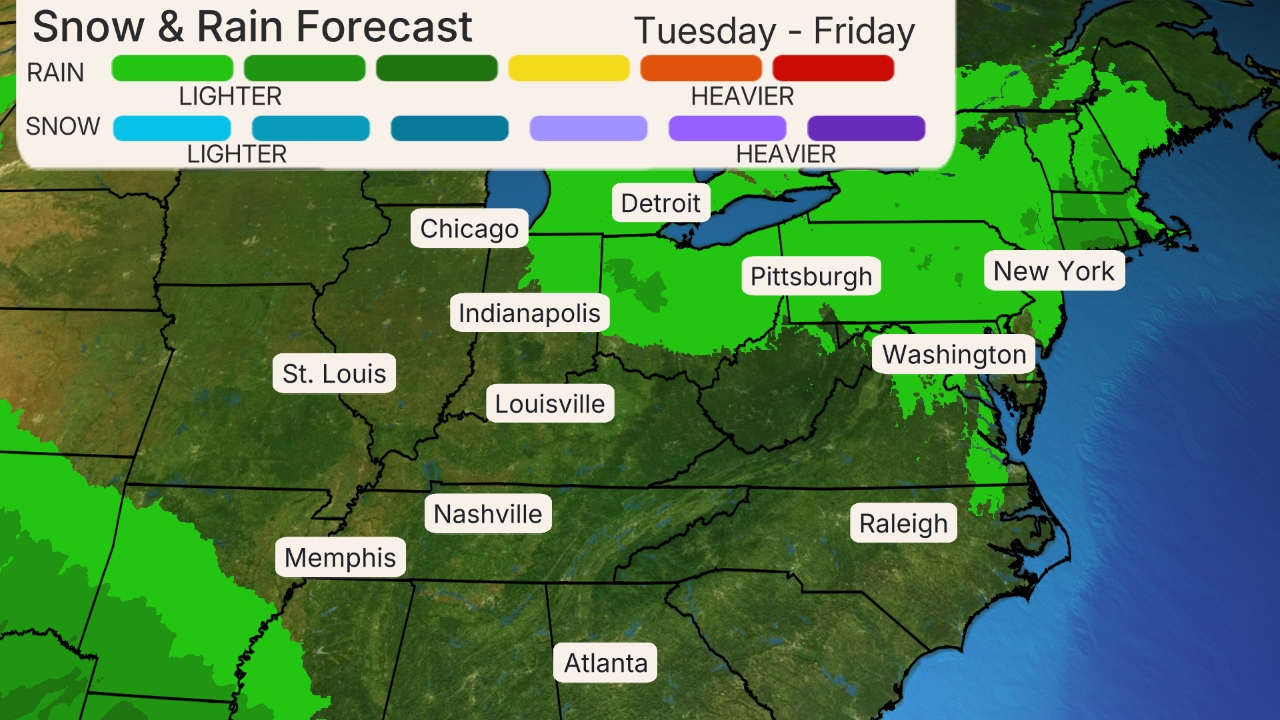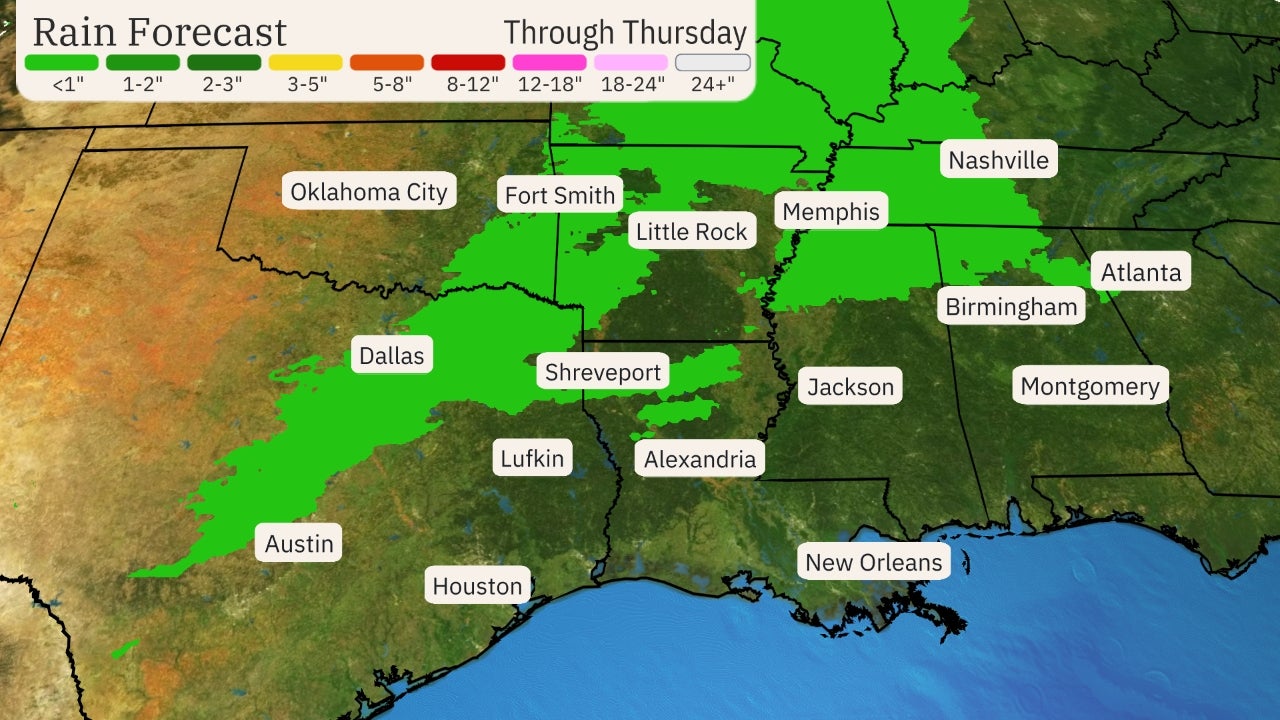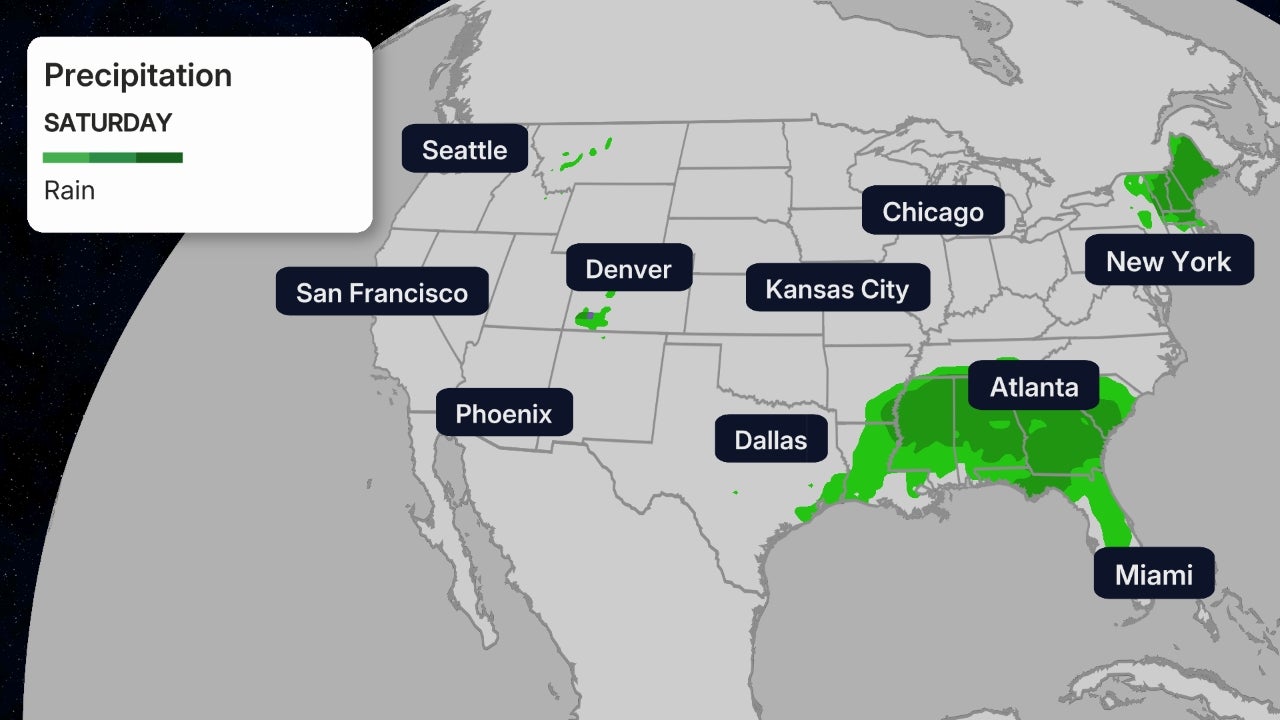Linda Lam
An active weather pattern will usher in March and several areas across the Lower 48 could see rounds of rain and snow.
Furthermore, temperature changes are ahead for parts of the country, which is to be expected as meteorological spring begins.
(MORE: March Weather Has a Stormy Reputation)
Below, we take a closer look at four things we're watching in the week ahead.
1. Wet Pattern Continues in the South
Several disturbances will bring multiple rounds of rain to parts of the South into next week.
The focus of the heavier rainfall will shift its location from this weekend into next week and there will be some dry periods.
 Five Day Forecast
Five Day ForecastThere is uncertainty on where rainfall will set up toward the middle of next week, but a soggy overall pattern is expected for portions of the South as March starts.
(MAPS: 7-Day Forecast)
The heaviest rainfall is expected from Arkansas into Tennessee and Kentucky over the weekend. But next week, moderate to locally heavy rainfall is likely farther south from the lower Mississippi Valley into central Alabama and northern Georgia.
This rainfall may be beneficial in some areas that have been drier than average recently, including parts of Texas, northeastern Louisiana, northwestern Mississippi and Tennessee. On the other hand, locally heavy rainfall could lead to some flash flooding.
 Rainfall Outlook
Rainfall Outlook2. Moisture Increases Along the West Coast?
Several weak systems will bring rain and mountain snow to portions of the Pacific Northwest in the week ahead.
A low-pressure system may track far enough southward to spread moisture into parts of Northern California later next week and/or possibly for the first weekend of March. However, there are notable differences in the models, so the details at this point are more uncertain than usual.
The first few days of March will bring a chance for moderate rainfall in western Washington and northwestern Oregon, while light rain may extend into California. Heavy snow is expected in the northern Cascades.
 Snow and Rain Outlook
Snow and Rain Outlook3. Temperature Changes
March 1 is the meteorological start of spring and temperature fluctuations are part of the season. Right on cue, milder temperatures are expected across much of the Lower 48 for the first week of March.
The East can expect above-average temperatures Monday, but a cold front will push through, causing temperatures to tumble.
High and low temperatures will be colder than average Tuesday for much of the Northeast and mid-Atlantic. It will be a chilly start to Tuesday in the Northeast with lows in the teens and 20s. Monday's highs in the 40s and 50s will be replaced with 20s, 30s and 40s Tuesday.
 Forecast Highs
Forecast HighsMuch of the South and West will experience a slight warming trend through the week, while temperatures will be the most above average in the north-central United States.
Highs will be 10 to 20 degrees warmer than average from the Northern and Central Plains into the Midwest – this translates to widespread highs in the 40s and 50s. Low temperatures will be near-average or slightly warmer in the Northern Plains and Midwest.
 Forecast Highs
Forecast Highs4. Mid- to Late-Week Systems?
A couple of low-pressure systems might move through parts of the central and eastern U.S. over the second half of next week.
As mentioned above, the chance for rain may persist in parts of the South into the middle of next week or even longer due to a couple of disturbances.
There are also some signs that portions of the Midwest and Northeast could see rain and/or snow during the second half of the week. This includes the potential for an area of low pressure to track near the Northeast coast.
The specifics on the late-week forecast will become clearer over the next few days, so be sure to check back for updates.
 Mid- to Late-Week Setup
Mid- to Late-Week SetupThe Weather Company’s primary journalistic mission is to report on breaking weather news, the environment and the importance of science to our lives. This story does not necessarily represent the position of our parent company, IBM.
The Weather Company’s primary journalistic mission is to report on breaking weather news, the environment and the importance of science to our lives. This story does not necessarily represent the position of our parent company, IBM.

No comments:
Post a Comment